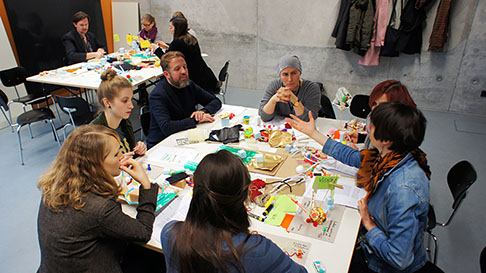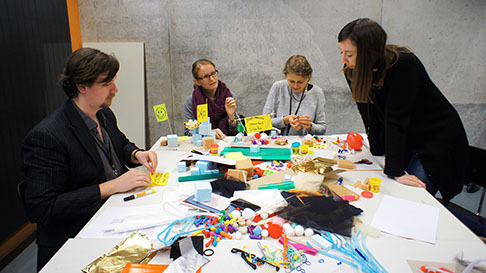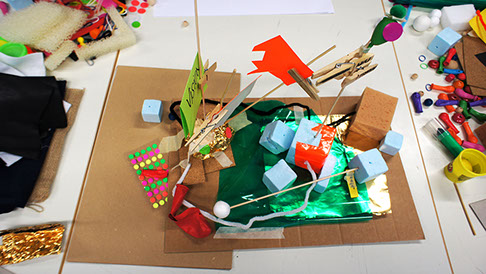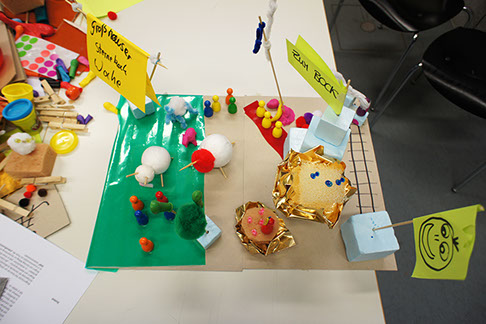Anna Keilbach
Workshop at dgtf-Conference in Dessau, 2016
Design-orientated Working Methods
At present, team settings are being reshaped in many companies. Influenced by the digital transformation, heterogeneous teams and the integration of cross-disciplinary communication competencies are necessary. But not only team constellations are questioned, also new ways of working are necessary. The collaboration within the colourfully mixed, interdisciplinary teams simply requires the adaption of new methods. The »how« thus represents a great challenge in sustainable organisations. Especially in this context creative design processes offer added value and do constantly find their way into strategic work. A typical example of such creative design processes are visual prototypes. They offer support to interact in an objective way. The tangibility and illustration create a common basis for discussion by presenting abstract knowledge in a reduced form. The exchange, problem solving and idea generation of new future perspectives is thereby facilitated. Consequently, design methods overcome cultural, hierarchical and subject-specific barriers to communication.
The d:t trio Andrea Augsten, Anna Keilbach and Daniela Peukert conceived the workshop »Entwurf design-orientierter Arbeitsweisen« as part of the dgtf conference (German Society for Design Theory and Research) in Dessau. Its aim was to test design methods within interdisciplinary teams using haptic prototypes.


In order to simulate an interdisciplinary team setting and the collaboration of a common future strategy within the limited workshop period, a scenario with different roles were provided. The action of the scenario took place in a region in northern Germany that is characterized by large-scale conventional agriculture and livestock farming. The participants, who had exclusively professional design backgrounds, had to empathize with the roles of farmers, biologists, mayors, veterinarians and organic shop owners through the help of a given persona description. Thereby, they had to understand their respective positions and needs and jointly develop a vision for the future of the region. The first challenge for everyone was to present their own point of view in a three-dimensional form. Various haptic material was available to built up a prototype. Wishes and conflicts had to be expressed and explained to each other on the basis of the resulting model. The second part of the workshop included the collaborative design of a strategy within the group. A common prototype was developed with the available materials, which visualized the future vision for the northern German region in the year 2030.


The workshop showed that design methods (e.g. building prototypes) reduce communication hurdles and improve interdisciplinary cooperation by adding visuality and three-dimensionality to language . By jointly developing the prototypes, the teams engaged in an intensive discussion about the conflicts and future perspectives for the region. The iterative and interactive way of working led promptly to a result, in which first ideas can be represented and further steps can be discussed. One should also not forget the fun factor in building prototypes together, which is definitely an important link for a pleasant and successful cooperation.
Go tinkering!
*** a contribution by Anna Keilbach & Daniela Peuckert ***
Privacy Policy